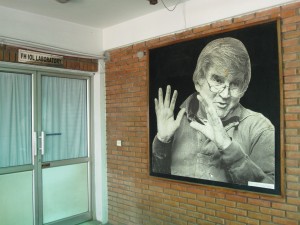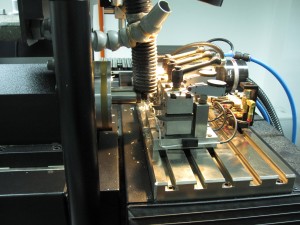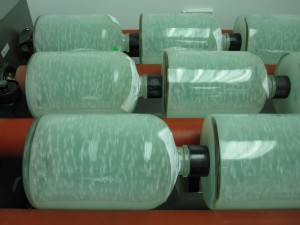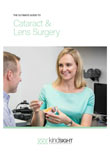As a surgeon, it’s easy to take for granted the wonderful eye technology that, over the years, has paved the way for more successful patient outcomes. However, there’s one piece of technology I’ll always value not just for its contribution to modern eye health, the IOL.
What is an IOL?
The IOL or Intraocular Lens is a small piece of precisely-designed plastic inserted into the eye during cataract surgery. It’s designed to replace the natural lens and support vision post-surgery.
Modern IOLs are foldable and implanted through a very small incision. This means recovery from surgery is much quicker than it used to be. IOL technology continues to improve, and a large range is now available to Australian surgeons for implantation. Even some that provide an extended depth of focus or multifocality, which attempts to achieve greater freedom from glasses.
A brief history of IOL Technology
Implanting an IOL provides vastly better visual outcomes for patients with cataracts. Their introduction to the eye health industry has been nothing short of revolutionary. Prior to the invention of the IOL, nothing was implanted after the removal of a cataract to support sight post-surgery. Consequently, patients had to wear glasses as thick as ‘coke bottles’ afterward. As you can imagine, these glasses were very heavy, had poor optics, and would break easily.
The difficulty, unfortunately, didn’t end there. For a long time after its invention in 1949, this seemingly small medical device remained too expensive for many people, particularly those living in disadvantaged communities. By the 1970s, the incredible benefits of IOLs were commonly known, and the technology began to be adopted in many more countries.
Fred Hollows: Inspiring a revolution in IOL Technology
While Fred Hollows didn’t invent the IOL, he worked to make them more freely available to patients in developing countries. This was achieved by producing them at low cost in factories in Nepal and Eritrea. As the world’s leading cause of blindness, you can imagine how important and impactful this was. It meant making this sight-saving technology available to so many more people.
After becoming aware of the eye care needs of Nepal, Hollows formed a friendship with respected Nepalese ophthalmologic surgeon Dr Sanduk Ruit. The pair then embarked on an inspiring mission to implant IOLs in the developing world.
In the beginning, the IOLs were donated. However, Hollows soon got the idea to manufacture these ‘pieces of plastic’ themselves after a trip to Eritrea. By 1994, two laboratories were opened, one in Nepal, and one in Eritrea.
Through these factories, Hollows and Ruit caused a paradigm shift in what could be achieved for patients in the developing world. Consequently, they deemed implantation of an IOL should be the standard of care for everyone requiring cataract surgery. Additionally, one of the biggest costs of cataract surgery was reduced. As a result these facilities now produce around 250,000 lenses each year, locally managed and independent.
So, this ultimately gave ophthalmologists the ability to perform low-cost surgeries in developing countries and help more people than ever before.
For more information, visit the Fred Hollows Foundation website.
Seeing is believing
In 2009 whilst completing my fellowship with the Fred Hollows Foundation I was lucky enough to have the opportunity to visit Fred Hollows’ IOL factory. Located at the Tilganga Institute of Ophthalmology’ (TIO) in Kathmandu (Nepal), it was impressive, efficient and an incredible sight to behold.
Perhaps most impressive was that despite the overwhelming obstacles, a sophisticated manufacturing plant had been set up in a developing country. And not just any factory but one that surpassed international standards.
It was incredible to observe all of the stages of manufacturing. I met so many of the staff along the way and they were immensely passionate and proud of the operation.
I found the most fascinating part of this journey was realising that there in dusty, chaotic Kathmandu was a world-class facility. As a result, it was beating all odds to produce high quality, affordable IOLs. A true and very real accomplishment not just for the community and for eye health, but for everyone who benefitted from it.
The last word…
To put my love of this technology into perspective – every time I do a cataract operation I implant an IOL. Every. time. I don’t know where we’d be without this technology. I’m so grateful and proud to be able to use it daily to benefit my patients. Most importantly, I feel so grateful that I work and live in a country with a health system that allows me to access such excellent technology for my patients.
If you think you may need cataract surgery, contact KindSIGHT today for a consultation.












